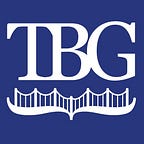The Role of Non-Profit Organizations in Bridging the Digital Divide
By: Aneesh Patel
The COVID-19 pandemic has opened our eyes to the fact that a stable Internet connection, reliable access to technological resources, and digital literacy are not luxuries, but necessities. Unfortunately, many individuals in rural or low-income communities are digitally disadvantaged, lacking resources and literacy. The resulting disparities between these marginalized populations and those who benefit from their technological resources is referred to as the “Digital Divide.” This article explores how non-profit organizations have been working to bridge these discrepancies in technological access and education in order to democratize the power of technology.
Technological Access
Hardware
Computers 4 People (C4P) is a non-profit based in New Jersey that primarily focuses on refurbishing and recycling used computers for individuals in technologically-deprived or disadvantaged areas. I spoke with Executive Director Dylan Zajac to learn more about the steps his organization is taking to bridge the digital divide from a hardware standpoint.
Computers 4 People receives used or broken computers, either one at a time from individuals or in bulk from businesses undergoing company-wide hardware upgrades. These computers are then refurbished and tested by hand to ensure their functionality. At this point, the computers are handed to one of the many local non-profit organizations that C4P has partnered with to distribute them free of charge to a number of disadvantaged communities that would stand to benefit from access to computers, ranging from students to the homeless population to the formerly incarcerated and more.
Connectivity
EveryoneOn strives to provide a multi-faceted solution set to the numerous challenges that the Digital Divide poses through their many programs and partnerships.
In an interview with their Senior Director of Programs and Partnerships, Kurt Peluso described how his organization works with internet service providers across the nation to provide little-to-no cost Internet access to individuals who would not be able to afford it otherwise. By leveraging their connections with internet service providers and the Federal Government, EveryoneOn has a number of active and successful initiatives to institute educational broadband in rural areas, bring public housing residents online and provide affordable Internet connectivity to the masses.
Technological Education
Eliminate the Digital Divide (E-2-D) is a non-profit agency that aims to create digital solutions for families in and around Charlotte, North Carolina. To find out more about E-2-D’s role in working to address digital literacy concerns, I spoke with Community Outreach Director Christy Cowan.
Eliminate the Digital Divide partners with other non-profit organizations through SHARE Charlotte to host digital literacy seminars for historically underserved communities, such as the homeless and Hispanic populations. Prior to the pandemic, E-2-D also hosted the Mobile Middle School Lab initiative, which was founded with the goal of exposing students from disadvantaged communities to the field of information technology at an early age. Over the course of the program, students were taught how to refurbish old laptops and introduced to the idea of a future career in IT. Additionally, as part of their Re-Image CLT campaign, E-2-D’s Technology Academy engages high-school students across a number of campuses in areas such as software development, web design, and cybersecurity.
Takeaways
At the end of the interviews, I asked each representative for one piece of advice they would give to other non-profit organizations working to bridge the digital divide.
Leverage Volunteer Support
“Bringing on volunteers has been tremendously useful for distributing work within our organization.” -Dylan Zajac (C4P)
Focus on Manageable and Sustainable Growth
“One of the biggest challenges we faced was growing too fast and trying to do too much too quickly.” -Kurt Peluso (EveryoneOn)
Tailor Services to the Individual Needs of Each Community
“It’s important to ask communities what their needs are and how you can help fix them.” -Christy Cown (E-2-D)
